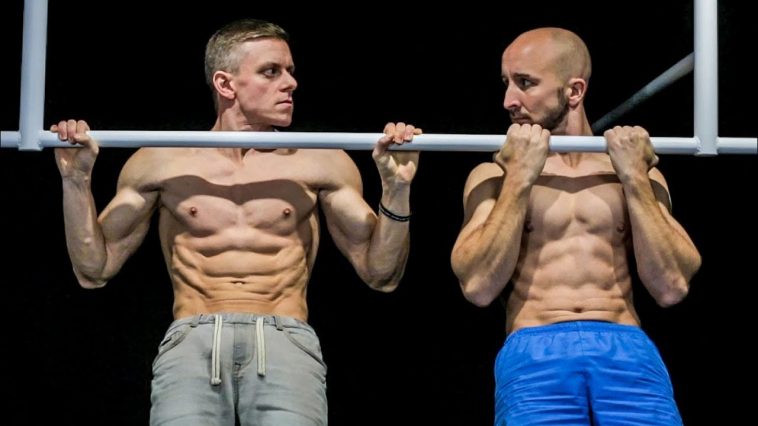Pull-ups and chin-ups look very similar. After all, both require lifting your body with just your arms and a bar, and both are feats that are a necessity when it comes to bodybuilding. Also, they seem to focus on muscles in your arms, making it even more confusing to differentiating between the two.
Aside from the apparent difference of the grip, the two focus on different muscle sections, and having a concise understanding of how they work can be crucial to refining and perfecting your workout routine. Below are directions for each as well as an alternative for those without access to a pull-up bar.
Directions
- Pull-up: Using a pull-up bar, take an overhand grip, making sure that your hands are a little more than shoulder-width apart. Slowly raise your chin above the bar, holding the position for a second before lowering yourself to the starting position. Make sure your feet do not touch the ground.
- Chin-up: With arms shoulder-width apart, take an underhand grip on the bar. Slowly raise chin above the bar, holding the position for a second before lowering yourself to the starting position, keeping feet off the ground. It is the same as a pull-up, just with a different grip.
Muscles Worked
While both focus on arm strength, the pull-up helps with exercising the latissimus dorsi muscle, or the ones on your back. This is because the wider grip takes away support that your biceps can give, and the pronated hands only add to the effects. Besides, it requires “adduction” at the shoulders that further requires back strength. As the grip grows closer, muscle fibers towards the upper back are exercised. To train your abs whilst doing pull-ups, try doing some hanging leg raises which are great for developing v-lines.
Chin-ups, on the other hand, allow for a closer hand placement that gives more possibility of letting the biceps get involved. It requires less exercise of the latissimus dorsi at the cost of needing more arm power. However, as many people have more strength in their arm than their backs, this is why they may find chin-ups easier.
Pull Up Alternative With Dumbbells
For those with no access to a pull-up bar, there are great alternatives to both that still focuses on the biceps and back muscle fibers. For example, dumbbell pullovers only require a bench or exercise ball and can work on arm strength as well as the lats. Bicep curls are a classic that focuses on biceps as well. Bent Over Rows are easy to learn as well when looking for options.
Conclusion
When it comes to pull-ups and chin-ups, there is no right answer to which is better. Those wanting to focus on their arms should go to chin-ups, which those who wish to increase the strength of their lats should opt in for pull-ups. Also, there are even more options that only require dumbbells for those who may not have a pull-up bar, which target many of the same muscle groups. When it comes to workouts, it all depends on where you are and what your goal is.




Comments
Loading…